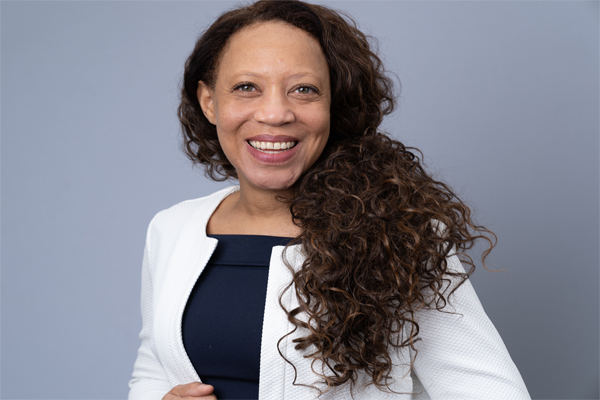In this week’s guest column, Jenny Garrett OBE, Leadership Coach and Trainer and MD of Reflexion Associates, shares why and how Diversity, Equity and Inclusion (DE&I) professionals can develop resilience and face the challenges that the role brings, especially for those who also belong to an underrepresented group.
Working as a DE&I professional is already a tough job, but even tougher if you are from a minoritised group yourself. You may feel that the work you do is an uphill battle, that you find it hard to switch off from this important work, and that people don’t recognise the personal toll it can take on you. The only way to solve this is to develop resilience.
DEFINITION OF RESILIENCE
We take the American Psychological Societies definition of Resilience as:
The process of adapting well in the face of adversity, perceived threat or significant sources of pressure and stress,” along with the understanding that “resilience is not a trait that people either have or do not have. It involves behaviours, thoughts and actions that can be learned and developed in anyone.
Accordingly, developing resilience cannot be defined as a character trait, but as an actionable decision made by an individual. Once you’ve made the choice to be resilient, the question is how do you develop it and practice it? That was the question that was answered during a session I hosted, to support Diversity, Equity and Inclusion professionals took place to help them develop the resilience to keep going.
A large audience attended to hear some excellent suggestions, methods and strategies to bolster your resilience as a DEI professional and how to face the challenges that the role brings. Our live poll at the event suggested that 75% of those who attended cited emotional labour as one of the biggest challenges associated with the role. Here’s some advice from three experts that attended the session.
WELLNESS ADVICE FROM MARTHA CUFFY
Martha Cuffy, Executive Coach and Wellness Programmes Designer from Wellness Architect, shared the following advice:
1. The power of slow
Create a PAUSE button on your desk. This is an easy prompt to slow down so your body and nervous system can settle if your mind is racing ahead. This will increase your resourcefulness and creativity.
2. Feeling nervous?
Try my two minute breathing practice or this three-minute nerve soother.
3. Resource Up
Write down your list of internal and external resources. This makes it easier to remember under stress. This can be anything that supports and nurtures a sense of physical, emotional, spiritual and mental well-being. Examples: Internal resource = your sense of humour, agility or spiritual practice. External resource = family, friends, dancing or being in nature.

WELLBEING ADVICE FROM MARIE LONEY
Marie Loney, a Wellbeing Executive Coach, Consultant and Trainer from Glow Consultancy London shared these great tips:
1. Find someone you trust
Either a colleague, family member, friend or coach who will support you to gain an understanding of how to deal with the situation and give you confidence.
2. Learn to say ‘No’
Don’t invite negative energy into your personal space, instead protect yourself by putting up barriers to keep it at bay. Visualise a physical or mental barrier that’s impenetrable so that you can retain your strength for more important matters.
3. Space to process
Find time to feel your emotions and process your thoughts so that you can respond and not react to a situation. This will help you to process and protect your mental health. Use phrases such as ‘can you give me 5 minutes’, or ‘I hear what you are saying but I’m right in the middle of something can I get back to you tomorrow or later’. Taking time out can help you block out the noise and focus on what is important.
4. Start your day on a positive foundation
I begin each morning with inspiring music and encouraging words to kickstart my day. Setting myself up for success every morning, with a positive outlook adds the extra energy I require to see me through the day.
5. Just breathe
I encourage clients to focus on breathing to calm their minds and emotions and get them in the right head space. I use the Cardiac Coherence breathing technique it’s a simple way to calm the body. Coherent breathing helps to reduce stress and anxiety. To do this breathe in deeply for five seconds and then breathe out for five seconds continuously. Repeat for five minutes three times a day.
6. Start journaling
I invite clients to write about difficult situations, I do this myself – journaling in the mornings. I use my journal to offload some of the difficult situations I face, like emotional dumping, and then I can process my thoughts and feelings to gain strength. Writing enhances your emotional and physical well-being therefore, journaling supports me to understand how to turn a negative into a positive experience.

POSITIVE MINDSET TIPS FROM SUKI COLLINS
Finally, Suki Collins, a Global 500 leader and a chartered member of the Institute of Personal Development spoke about how to build a positive mindset that can help you to build your resilience as a DEI Professional. Her top take-aways are:
1. Positivity
Having a positive mindset is so important to overcome all forms of resilience. It improves your wellbeing as well as teaches you to breathe properly. Something about being positive helps you to relax and enjoy every moment. You become focused on the moment and do not worry about what is outside this.
2. Power
The Power pose, a concept by Amy Cuddle, can help you overcome how you feel before having a difficult conversation. It’s all about having the right body language when you are faced with challenges.
3. Circle of Control
The Circle of control and circle of concern developed by Steve Covey is a great method to have under your belt. It will help you to focus on what you can control and cannot do – excellent for building your resilience
4. Milestones
It’s never easy to see the whole elephant, but it is easy to break it down into small chunks so you can build up the whole picture of the elephant yourself.

CONCLUSION
Being a DE&I professional, especially when you belong to an underrepresented group yourself, is a tough and often thankless job to be in. It is hard to switch off from the idea that you are working for the greater good, but the only way to overcome these challenges is through resiliency.
As a DE&I professional, you must realise that you are doing an important job, and you must continue to believe in yourself and the work that you are doing to succeed. Try out some of the tips above and you’ll see for yourself that you will be stronger in your work and able to overcome the common challenges that come with the role.
If you’d like to learn more about the coaches featured above then visit the Diverse Executive Coach Directory.
AUTHOR BIOGRAPHY

Jenny Garrett OBE, MD of Reflexion Associates, is an award-winning career coach, author and leadership trainer. Through coaching and leadership development, her company supports women and ethnically diverse leaders to progress at work. As well as supporting majority group leaders in making inclusion happen. For more information, check out her website.







































